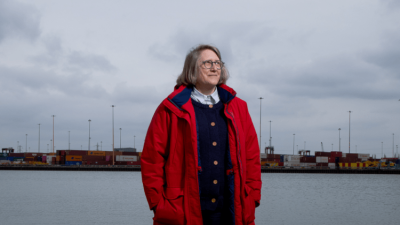
Rewriting Women into Maritime makes London International Shipping Week debut
Rewriting Women into Maritime makes London International Shipping Week debut.
This page is approximately a 4 minute read
This page was published on

From whalers to warships, Hull is justly proud of its maritime history spanning 800 years. For the last 250 of these, Lloyd’s Register has been an integral part of the port’s seafaring activity. Surveyors at the Register’s Hull office were early pioneers of the safety measures still protecting seafarers today. Now our association with Hull is being explored by the city’s university with the help of a Lloyd’s Register Foundation grant.
The Lloyd’s Register Foundation Thomas Chapman Scholarship (named after Thomas Chapman, chairman of Lloyd’s Register from 1835 to 1881) is focused on safety – its aim is to enhance knowledge, understanding and public awareness of the risks to life and property that are inherent to work at sea, and to mitigate those risks through behavioural and policy change. It was awarded to its first two PhD students in 2019 - Peter Phillipson and Sam Wright - who are based at the University of Hull’s Blaydes Maritime Centre.
Peter, a retired structural engineer, is investigating the contribution made by Lloyd’s Register to improvements in the safety of merchant ships during the period from 1834 to 1881. This was a time when the rapid growth and technological development of shipping dramatically increased the dangers inherent in operating sea-going vessels.
Peter’s research has established that Lloyd’s Register pioneered the application of what would now be called quality assurance and risk mitigation on a truly global scale. In impact terms, studying LR’s revolutionary nineteenth-century approach offers valuable insight into the successful management of rapidly changing technology, highlighting skills and practices that are still relevant today and are critical to engineering a safer future.
Peter explains his enthusiasm for the research opportunity provided by the Thomas Chapman Scholarship: “Ships and shipbuilding have always fascinated me, which may be due to the influence of my Glasgow-born father or because I grew up on Tyneside. I’m a retired engineer so I appreciate the technical challenges involved in confronting the forces of nature. However, my fascination derives from more than professional interest: ships are unique cultural and historic artefacts, with individual identities and life stories.”
Sam’s research focuses on Hull’s maritime history, investigating the historic connections between the port and Lloyd’s Register. Key elements include examination of the risks associated with UK distant-water fishing during the course of the twentieth century and assessment of the role played by Lloyd’s Register in the pursuit of safety aboard the nation’s trawlers. His research has shown that the surveyors of Lloyd’s Register were an ever-present technical guardian for Hull’s trawler fleet, ensuring seagoing quality and providing a framework for the construction of safer vessels. Such insights offer historical context for the Foundation’s current endeavours to confront the challenge of improving fishing safety around the world, specified in their 2018 Insight Report as a crucial goal.
“My interest in maritime history began on childhood holidays to the Lake District which, at my persistent request, always involved a cruise on Windermere,” says Sam. “From there, my fascination with ships and mankind’s relationship with the maritime world grew, and university allowed me to investigate other topics such as port-cities and how such places were shaped by their relationship with the sea.”
Peter and Sam have collaborated to chart the long association between Lloyd’s Register and the port of Hull in a fascinating online exhibition, The Hull Connection, hosted on Lloyd’s Register Foundation’s Heritage Centre website.
Their research for the exhibition showed that ships registered in Hull featured in the earliest editions of the Lloyd’s Register. One of these was the Bethia, a collier built at Blaydes Shipyard on the River Hull and later renamed HMAV Bounty following purchase by the Admiralty. In 1789, disaffected crewmen seized control of the Bounty while on a voyage in the south Pacific, an infamous mutiny celebrated by two movies.
The exhibition also highlights the role played by Lloyd’s Register in investigating tragedies at sea – such as the 1968 Triple Trawler Tragedy, where three ships went down in extreme conditions off the coast of Iceland, with the loss of 58 men from the Hull area.